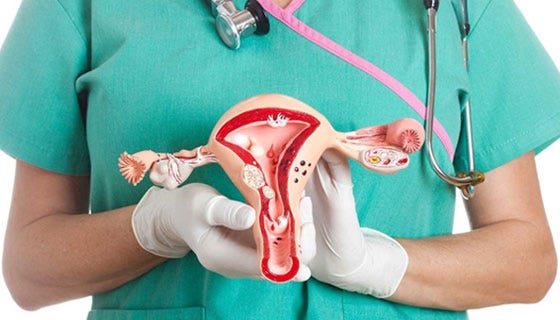I’ll start this discussion by saying: “Whether or not you have a hysterectomy is NOT the cause of having a migraine. It can, however suggest some common hormonal root cause factors that could be promoting both uterine dysfunction and migraine headaches.”
By the age of 60, one in three women will either have a hysterectomy or have had it recommended to them. That includes procedures proposing removing the uterus only, and those including removal of the ovaries as well.
The potential reasons for hysterectomy are many, and sometimes the procedure may be unavoidable for the management of cancer or precancerous lesions.
Among the most common non-cancer related reasons for a hysterectomy:
Uterine fibroids
Endometriosis
Increasingly heavy, painful or prolonged menstrual periods
Excessive thickening of the uterine lining (adenomyosis)
Uterine prolapse
Ultimately most hysterectomies are the end result of years of hormonal imbalance that with time adversely affects the uterus. The most common version of this imbalance is a condition we call estrogen dominance, where the excess influence of estrogen affects either uterine anatomy or its function related to menstrual periods. In most cases, it’s not that there’s too much estrogen, but rather too little progesterone to balance the estrogen that is present. This also the case in many migraines where hormones play a role. Estrogen dominance can be a strong promoting factor for migraine headaches in women, especially late in the monthly cycle, or during peri-menopause if in either case progesterone output is suboptimal.
If advice about considering a hysterectomy overlaps with a worsening of your migraines, that’s a pretty good sign that you should take a closer look at the role of estrogen dominance in both situations.
Some of the problems caused by estrogen dominance include:
Irregular or heavy periods
Migraines
Mood changes
Difficulty concentrating
Weight gain and abdominal bloating
Hot flashes.
Breast tenderness.
Increased breast density over time, which can also make a mammogram less accurate in early detection of abnormal changes
Fatigue
Low libido
Insomnia
Uterine fibroids
Fertility issues
Some of these fall into the latter portion of the menstrual cycle and are loosely termed PMS, or premenstrual syndrome. This is a portion of the monthly cycle that is particularly prone to progesterone deficits.
If you have migraines, and also have any combination of the above symptoms, consider that they may be related. If you have also been told that you may need to consider a hysterectomy for a non-cancer related reason, this should also raise a yellow flag on a potential chronic estrogen/progesterone mismatch. Of course, its always best to recognize ongoing estrogen dominance as early as possible and potentially lower the long term negative pro-proliferative effects it can have on the female reproductive tract (including the breast).
Unfortunately, as the estrogen and progesterone levels can change dramatically on a daily basis through the cycle, doing blood work for these may not fully document an estrogen dominant condition. Self-charting symptoms like mood, weight, fluid retention, PMS changes, headaches, and breast tenderness through your cycle can often identify where your progesterone may be running low.
A simple yet underutilized strategy for estrogen dominance is to add a daily dose of USP Progesterone on the at risk days of the cycle. The use of progesterone is amazingly safe, to the degree that the FDA mandates that you can buy it routinely without a prescription.
I have seen the use of added progesterone reduce fibroids, adenomyosis, heavy periods and even endometriosis over time, at times to the point of not needing the proposed hysterectomy. Having said that, always pursue a full measure of due diligence on your healthcare options, with the final decisions about the management of your female health concerns made in consultation with your trusted medical advisors.
Some general thoughts about the use of progesterone for estrogen dominance:
-it is available over the counter (OTC) and by prescription. OTC versions give ~15-20 mg/serving. Many patients benefit from the 30-60 mg dose range. Long term it can be more cost effective to get these doses made up by a compounding pharmacy.
-if bought as a non-prescription, make sure that the label says “USP Progesterone,” not wild yam or other plant extracts. These extracts are not always fully bioidentically active.
-if used as a cream, apply in the evening and rotate in application among your four extremities (forearm/bicep areas and inner thighs) in turn, using each area once every four days.
-using the self-charting approach I discuss above, consider using a daily dose of topical progesterone during the most estrogen dominant times of the month, often the latter 7-10 days of your cycle. Some may benefit from some amount of daily progesterone support as well.
-you may benefit from finding a knowledgable medical consultation on individualizing hormone therapy for either migraine or other estrogen dominance related problems. If you have a nearby compounding pharmacy, the pharmacists there typically know where to direct you.
Managing estrogen dominance is s only one of 90 non-drug therapy options I’ve found useful for migraine headaches. If you would like to understand the broader range of root cause factors that drive your migraines and then individualize the many possible therapy options, you should take a look at my comprehensive Natural Migraine Relief for Women course and its unique Migraine Action Plan system. See www.naturalmigrainerelief.online for more details.
Also, remember to subscribe to this Substack blog to get regular postings on Frequently Asked Questions about Natural Migraine Relief for Women.
If you have a moment and would be willing to offer your feedback on this blog, click here:





